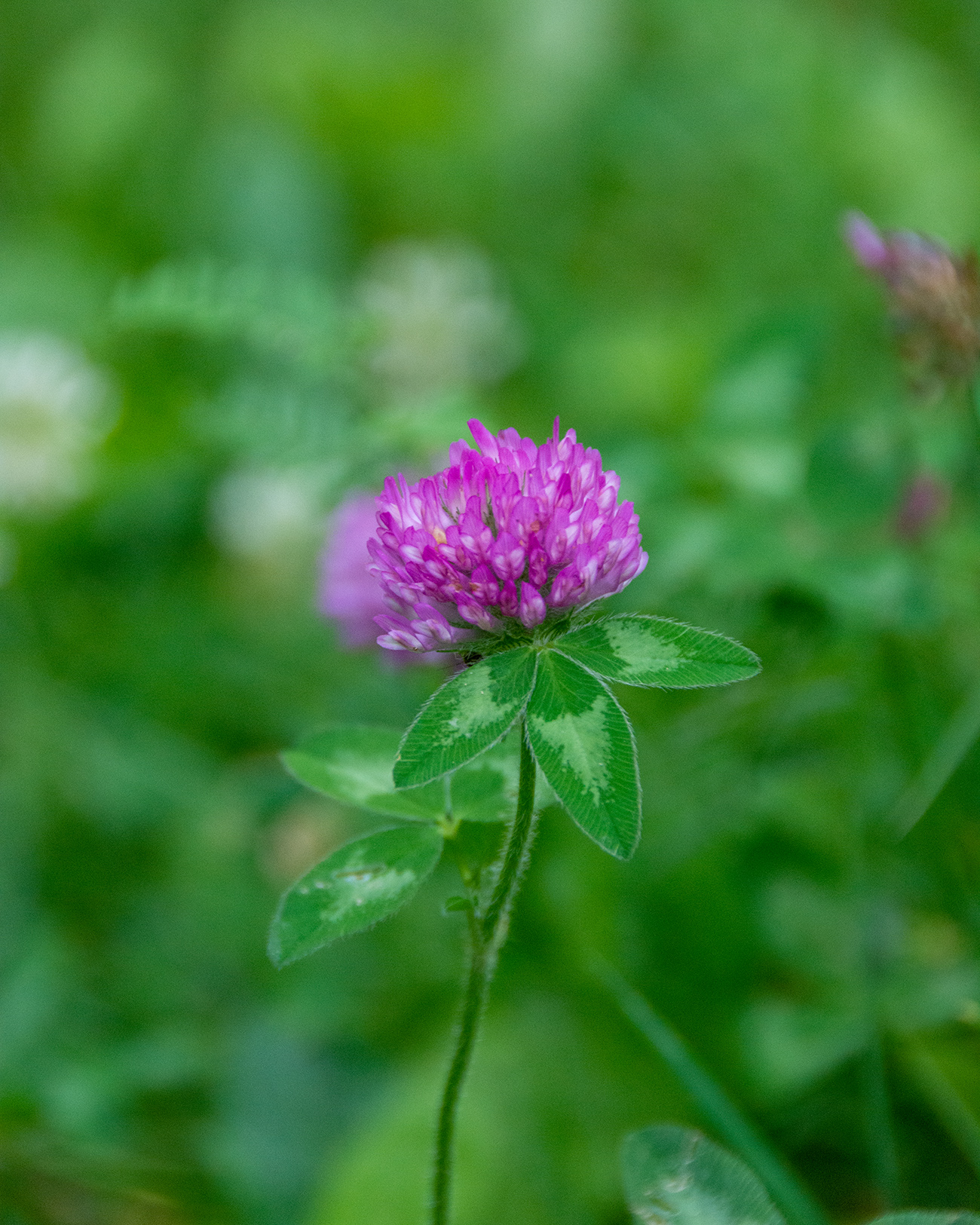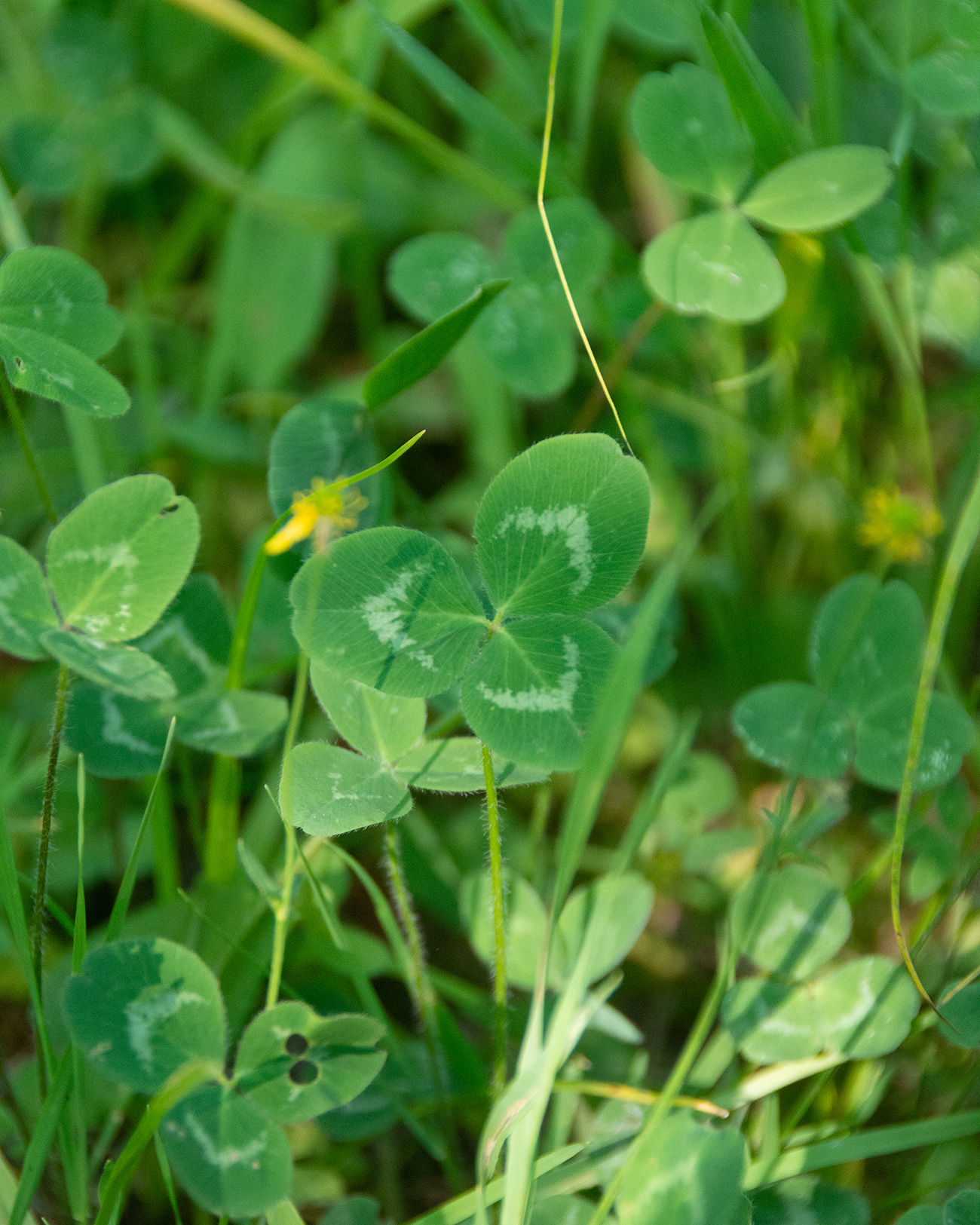Red clover is often dismissed as a “weed” but this small plant has been used traditionally for years for its edible and medicinal qualities. It is a great plant to introduce to beginner foragers as it grows abundantly throughout the world and many people can readily identify it. I was first introduced to the edible properties of red clover when a market vendor was using the flower heads to brighten up salad mixes. I’ve been using them ever since.

Appearance and Location
The scientific name for red clover is Trifolium pratense. The plant has compound leaves with three oval leaflets. If you look closely, you’ll notice that the leaves have a light v-mark pattern. Red clover flowers are pink and have round heads.
The plant is native to Europe, Western Asia, northwest Africa and has been naturalized in North America and South America. It is often found growing in lawns, fields, and along roadsides. Red clover grows from May to September.
Consumption and Nutrition
Both the flowers and leaves of red clover are edible but the flowers are more commonly used. You can eat them fresh or dried. They are high in protein and contain B vitamins and vitamin C. You should avoid eating the stems and any old or discoloured flowers.
To make the flowers more digestible, you can soak them in salty water or boil them. My favourite way to use the flowers is fresh as a garnish for salads and cakes. To help fresh flowers maintain their vibrant pink colour, it’s best to pick them early in the morning when they are still damp.
You can also pound the dried flowers into a baking flour. The flowers contain no gluten so you need to use a binding agent or mix it with regular flour to ensure your baking holds shape.
Red clover has been used traditionally in folk and herbal medicine. Many remedies use the dried flowers in tea. New studies published in the American Journal of Clinical Nutrition show that red clover could aid in the treatment of osteoporosis in post-menopausal women.
Animals Use
This plant is also an important food source for bumblebees, deer, groundhogs, rabbits, foxes, Canadian geese, partridge, some species of butterflies, moths, and insects. Animals, like deer, rely on the plant for its high protein content.


Precautions
Eating too much red clover can cause an upset stomach and consuming red clover on a regular basis could interfere with hormones. If you are pregnant or breast feeding you should not consume red clover. It has been linked to pregnancy complications in farm animals. It can also cause complications if you are taking blood thinners. Do not ferment red clover as it becomes a potent blood thinner. Always consult a doctor when introducing new wild foods and herbs and take care to properly identify plants.
Happy Foraging!
Red clover is more than a weed. It’s an important plant with edible and medicinal qualities and an excellent introductory plant for beginner foragers. If you’ve foraged for this plant, I’d love to hear what you have used it for. Check out my recent ‘10 Foods You Can Forage this Spring’ and ‘Identifying Clover (Trifolium spp.).’
References
Foster, Steven and James Duke. 2014. Peterson Field Guide to Medicinal Plants and Herbs of Eastern and Central North America. New York: Houghton Mifflin Harcourt.
Peterson, Lee. 1977. Edible Wild Plants: Eastern/Central North America. New York: Houghton Mifflin Harcourt.
Lambert et. al. 2017. “Combined bioavailable isoflavones and probiotics improve bone status and estrogen metabolism in postmenopausal osteopenic women: a randomized controlled trial” in American Journal of Clinical Nutrition.
Lambert et. al. 2017. “A systematic review and meta-analysis of the effects of isoflavone formulations against estrogen-deficient bone resorption in peri- and postmenopausal women” in American Journal of Clinical Nutrition.